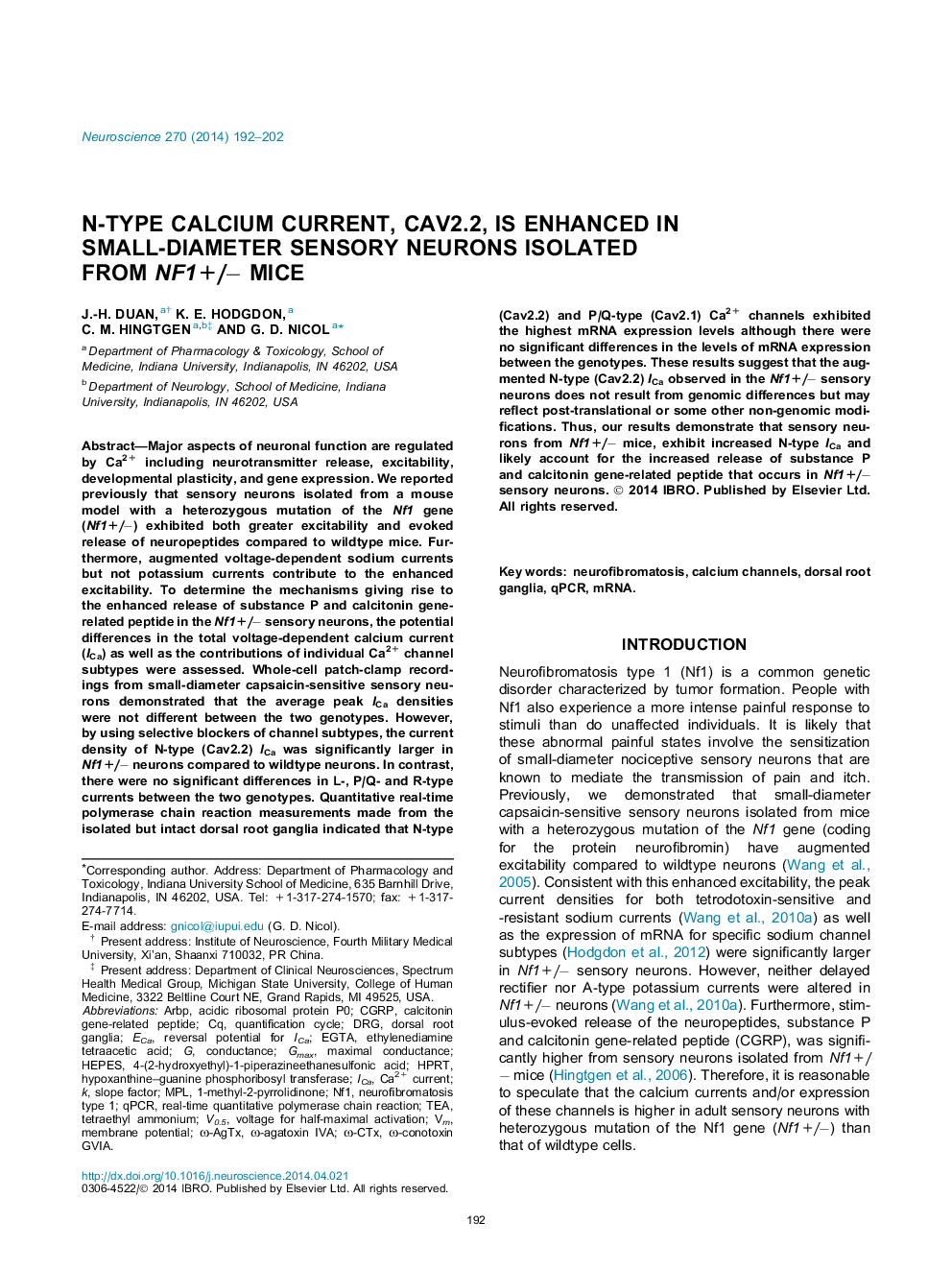| Article ID | Journal | Published Year | Pages | File Type |
|---|---|---|---|---|
| 4337601 | Neuroscience | 2014 | 11 Pages |
•Peak ICa densities were not different between wildtype and Nf1+/− sensory neurons.•N-type (Cav2.2) ICa was significantly larger in Nf1+/− sensory neurons.•No differences in L-, P/Q- and R-type currents between the two genotypes.•Using qPCR, Cav2.2 and Cav2.1 exhibited the highest mRNA levels in the DRG.•No differences in the levels of channel subtype mRNA expression between the genotypes.
Major aspects of neuronal function are regulated by Ca2+ including neurotransmitter release, excitability, developmental plasticity, and gene expression. We reported previously that sensory neurons isolated from a mouse model with a heterozygous mutation of the Nf1 gene (Nf1+/−) exhibited both greater excitability and evoked release of neuropeptides compared to wildtype mice. Furthermore, augmented voltage-dependent sodium currents but not potassium currents contribute to the enhanced excitability. To determine the mechanisms giving rise to the enhanced release of substance P and calcitonin gene-related peptide in the Nf1+/− sensory neurons, the potential differences in the total voltage-dependent calcium current (ICa) as well as the contributions of individual Ca2+ channel subtypes were assessed. Whole-cell patch-clamp recordings from small-diameter capsaicin-sensitive sensory neurons demonstrated that the average peak ICa densities were not different between the two genotypes. However, by using selective blockers of channel subtypes, the current density of N-type (Cav2.2) ICa was significantly larger in Nf1+/− neurons compared to wildtype neurons. In contrast, there were no significant differences in L-, P/Q- and R-type currents between the two genotypes. Quantitative real-time polymerase chain reaction measurements made from the isolated but intact dorsal root ganglia indicated that N-type (Cav2.2) and P/Q-type (Cav2.1) Ca2+ channels exhibited the highest mRNA expression levels although there were no significant differences in the levels of mRNA expression between the genotypes. These results suggest that the augmented N-type (Cav2.2) ICa observed in the Nf1+/− sensory neurons does not result from genomic differences but may reflect post-translational or some other non-genomic modifications. Thus, our results demonstrate that sensory neurons from Nf1+/− mice, exhibit increased N-type ICa and likely account for the increased release of substance P and calcitonin gene-related peptide that occurs in Nf1+/− sensory neurons.
